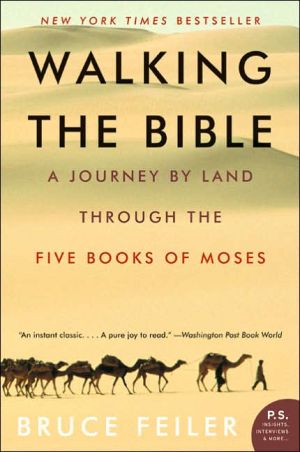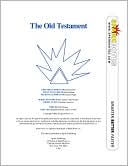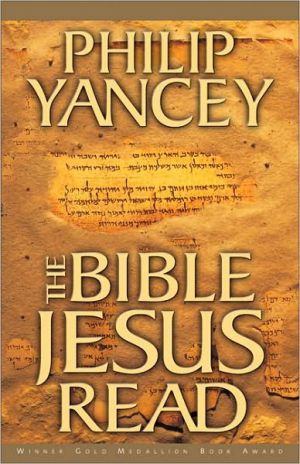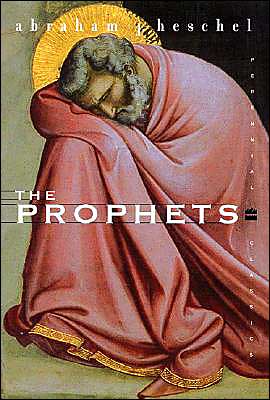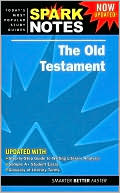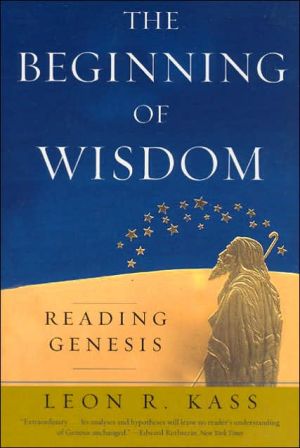Walking the Bible: A Journey by Land Through the Five Books of Moses
"The process of gathering these images reminded me of the Bible's effortless ability to reinvent itself for each generation and each new way of searching."\ —Bruce Feiler\ \ Its stories may be the best known in the world, but its locations have long been a mystery. Where did Noah's ark land? Where did Moses receive the Ten Commandments? Where are the lost cities of Sodom and Gomorrah? Now, in Walking the Bible: A Photographic Journey, New York Times bestselling author Bruce Feiler offers an...
Search in google:
E-book extra: "A Study and Reading Group Guide to Walking the Bible."Both a heart-racing adventure and an uplifting quest, Walking the Bible describes one man's epic odyssey -- by foot, jeep, rowboat, and camel -- through the greatest stories ever told. From crossing the Red Sea to climbing Mt. Washington Post Book World An instant classic...A pure joy to read.
Chapter One\ \ \ In the Land of Canaan\ \ \ The guard eyed me squarely as we approached his post, moving one hand from his belt to his walkie-talkie. His other arm rested on a rifle. He had gel in his hair and three stripes on his sleeve. "Yes?" he said, arching his eyebrows.\ It was 9:35 on a late-autumn morning when Avner and I strode toward the security checkpoint at the Damia Bridge, an Israeli-Jordanian border crossing about thirty miles north of Jericho. We had driven up from Jerusalem that morning to start the next phase of our journey, visiting sites in the Promised Land associated with Abraham, his son Isaac, and his son Jacob. Together they form the holy triumvirate of biblical forefathers, the patriarchs, from the Greek words patria, meaning family or clan, and arche, meaning ruler. The Five Books describe several forefathers who preceded these men, notably Adam and Noah, as well as many who follow. But the three patriarchs receive special distinction because it's to them -- of all humanity -- whom God grants his sacred covenant of territory, and through them that the relationship between the people of Israel and the Promised Land is forged.\ The story of the patriarchs takes up the final thirty-nine chapters of Genesis and covers the entire geographical spectrum of the ancient Near East, from Mesopotamia to Egypt, and back again, all within several verses. For Avner and me, this scope posed a challenge. Soon after our return from Turkey, we huddled in the living room of his home in Jerusalem and set about devising an itinerary. It was a sunny, comfortable room, with whitewashed walls, bedouin rugs fromthe Sinai, and pictures of his two children, as well as the two daughters of his second wife, Edie, a Canadian who served as office manager for the Jerusalem bureau of the New York Times. Avner sat at the table with his computer, online Bible, countless topographical maps, dozens of archaeological texts, and the handheld GPS device, while I paced the floor.\ Our most immediate problem was that with no archaeological evidence to relate any of the events in the Five Books to specific places, we were left to the often-contradictory claims of history, myth, legend, archaeobiology, paleozoology, and faith. There are nearly two dozen candidates for Mount Sinai, for example, and nearly half a dozen for the Red Sea. There are countless theories about which path the Israelites took through the Sinai. In addition, we faced the competing constraints of religious wars, political wars, terrorism, climate, budget, and health, as well as the desire to have fun.\ Ultimately we settled on a guiding principle: Our goal was to place the biblical stories in the historical and cultural context of the ancient Near East. Time and again, rather than focus on every story in the text, or even every interesting story in the text, we decided to concentrate on stories that could be enhanced by being in the places themselves. The story of Jacob and his brother Esau wrestling in Rebekah's womb, for example, while fascinating on many levels, struck us as not likely to be enriched by traveling to a specific location. The stories of Sodom and Gomorrah, by contrast, and the crossing of the Red Sea might easily take on new meanings by visiting their settings. In Judaism, the traditional process of analyzing scripture is called midrash, from the Hebrew term meaning search out or investigate; in Christianity, this process is referred to as exegesis, from the Latin word meaning the same thing. In effect, what Avner and I undertook was topographical midrash, a geographical exegesis of the Bible.\ In that spirit, we decided to begin our travels in Israel with a bit of a long shot. Our destination this morning was Shechem, the first place Abraham stops in Canaan and the next place the Bible mentions after Harran. The text makes no mention of what route Abraham, his wife, Sarah (she's actually called Sarai at the moment, as he is still called Abram), and his nephew Lot took to Canaan. Based on road patterns in the ancient world, one of the most logical places for him to cross into the Promised Land would have been a natural ford in the Jordan River just south of the Sea of Galilee, where the Damia Bridge is located today. Though we were already in the Promised Land, we decided to ask if the Israeli Army would let us walk across the bridge to the Jordanian side, then walk back, seeing what Abraham might have seen. Avner explained this idea to the sergeant, who remained at attention. After hearing the explanation, the officer removed his walkie-talkie and relayed our request.\ The border post was astir that morning. It was a small crossing -- the Jordan here is narrow enough for a horse to jump -- but tidy, decorated with cacti, olive trees, and oleanders. The gate was blue and white. Every few minutes a Palestinian truck would approach, ferrying oranges, honeydew, or polished limestone. The driver would dismount and hand over his papers, which the guards would stamp and return. Then the guards would roll open the gate, the truck would pass, and the whole process would start again. We were just becoming lulled by the routine, when suddenly we heard static on the walkie-talkie. The sergeant removed it and held it for us to hear: "I don't care if they write a book about the Bible," the voice said. "I don't care if they rewrite the Bible itself. But they're not going to do it in a military zone, and they're not going to do it on my bridge."\ The sergeant replaced his walkie-talkie and shrugged. "Sorry," he said, "only Palestinians."\ We returned to the highway and turned west toward the mountains. Shechem is located at the northern edge of the central spine of mountains that traverse much of Israel and the West Bank...\ Walking the Bible. Copyright © by Bruce Feiler. Reprinted by permission of HarperCollins Publishers, Inc. All rights reserved. Available now wherever books are sold.
Introduction: And God SaidGo Forth3Bk. IGod of Our Fathers1In the Land of Canaan392Take Now Thy Son633A Pillow of Stones93Bk. IIA Coat of Many Colors1On the Banks of the Nile1232And They Made Their Lives Bitter1473A Wall of Water165Bk. IIIThe Great and Terrible Wilderness1A Land of Fiery Snakes and Scorpions1992On Holy Ground2273The God-Trodden Mountain249Bk. IVThe Land That Devours Its People1Wandering2772And the Earth Opened Its Mouth3043The Land of Milk and Honey328Bk. VToward the Promised Land1The Wars of the Lord3512Half as Old as Time3733Sunrise in the Palm of the Lord394And the People BelievedTake These WordsIndex
\ From Barnes & NobleThe Barnes & Noble Review\ Walking the Bible merits a place on any intellectually minded traveler's bookshelf simply on the strength of its premise: a compelling journey of 10,000 miles across the Near and Middle East, in search of the locales at which many of the Old Testament's key events took place. Meticulously researched and documented, the book draws upon a wide range of canonical and secular research on the explicit geography of the Bible, and it offers readers a well-rounded look at both the holiest and most ignored biblical spots on earth. \ The guiding principle of Bruce Feiler's quest, on which he was accompanied by legendary biblical expert Avner Goren, was to place biblical stories in the historical and cultural context of the ancient Near East. Drawing upon the traditional Hebrew and Latin terms for investigating and analyzing the content of the Bible, Feiler explains, "What Avner and I undertook was a topographical midrash, a geographical exegesis of the Bible."\ What may sound like a high-minded, scholarly journey rooted in logic and reason also turned out to be a richly detailed, complex, inspirational tale of spiritual regeneration. The combination of personal narrative, harrowing travelogue, spiritual quest, and modern politics places Walking the Bible among the most remarkable works of travel literature. An accomplished author, Feiler makes what would otherwise be an excellent core historical travel text an incredibly moving, profound examination of the human relationship with God.\ Many travel writers use their adventures to seek answers to philosophical questions about identity, society, and humanity. Feiler's desert trek is an attempt to prove the validity of otherworldly, sacred religious beliefs by establishing and acknowledging terrestrial proof that biblical stories are, in fact, history, thereby solidifying the spiritual and experiential connection between them. While many before him have made pilgrimages to holy sites in order to reaffirm a connection with God, Feiler seeks to bestow a similar sanctity upon the living, tenable spaces on earth that figure prominently in the great Judeo-Christian saga.\ The relevance of this mission is confirmed repeatedly throughout his travels. Feiler begins his book by writing of the Jewish patriarch Abraham, "He was a traveler, called by some voice not entirely clear that said: Go, head to this land, walk along this route, and trust what you will find." That ancient, mythical call is a spirit-rouser for the author, and for the reader. While traveling in Israel, Feiler learns about the biblically sanctioned connection between Jews and their land when an American settler in the West Bank tells him that "to walk in the land of Israel is a holy thing to do." Ultimately, Feiler himself grows increasingly attached to the land upon which he treads, writing, "I began to feel a certain pull from the landscape.... It was a feeling of gravity." With that, Feiler's connection between abstract spirituality and terra firma is made profound, both for himself and for the reader lucky enough to take this remarkable journey with him. (Emily Burg)\ \ \ \ \ \ USA Today“Bruce Feiler went looking for proof. He learned that proof doesn’t matter.”\ \ \ New York Times Book Review“An enthusiastic travelogue…Feiler delivers a wealth of information in an accessible and entertaining format.”\ \ \ \ \ New York Times“[Feiler] is an excellent guide...He has...invested [this book] with a keen intellectual curiosity.”\ \ \ \ \ Miami Herald“An exciting, well-told story informed by Feiler’s boundless intellectual curiosity...[and] sense of adventure.”\ \ \ \ \ Los Angeles Times“Feiler, not unlike Mark Twain, brings a sharp sense of humor to the whole endeavor.”\ \ \ \ \ Chicago Sun-Times“A powerful and spiritual pilgrimage…in every way, marvelous if not indispensable reading for anyone remotely interested in the Torah.”\ \ \ \ \ Entertainment Weekly“An eloquently spiritual pilgrimage.”\ \ \ \ \ People“An inspirational oasis…From the barren land, Feiler emerges, like those whose paths he traces, renewed and transformed.”\ \ \ \ \ Christian Science Monitor“Evocative, descriptive, emotionally honest, and often funny.”\ \ \ \ \ Washington Post Book World“An instant classic…A pure joy to read.”\ \ \ \ \ San Francisco Jewish Bulletin“Goren and Feiler make for two of the most entertaining traveling buddies since Bob Hope and Bing Crosby.”\ \ \ \ \ Calgary Herald“Anyone planning to visit the Middle East should take two books with them--the Bible and this one.”\ \ \ \ \ Angelican Herald“A work of magic...[succeeds] in making the Bible exciting.”\ \ \ \ \ San Francisco Chronicle“Feiler’s accomplishment, and it’s a profound one, is to confront his idea of God...”\ \ \ \ \ Jerusalem Post“The perfect read for people who are interested in the Bible and the middle East.”\ \ \ \ \ Calgary Herald“Anyone planning to visit the Middle East should take two books with them--the Bible and this one.”\ \ \ \ \ Entertainment Weekly“An eloquently spiritual pilgrimage.”\ \ \ \ \ People“An inspirational oasis…From the barren land, Feiler emerges, like those whose paths he traces, renewed and transformed.”\ \ \ \ \ Chicago Sun-Times“A powerful and spiritual pilgrimage…in every way, marvelous if not indispensable reading for anyone remotely interested in the Torah.”\ \ \ \ \ Washington Post Book World“An instant classic…A pure joy to read.”\ \ \ \ \ Los Angeles Times“Smart and savvy, insightful and illuminating.”\ \ \ \ \ Jerusalem Post“The perfect read for people who are interested in the Bible and the middle East.”\ \ \ \ \ San Francisco Chronicle“Feiler’s accomplishment, and it’s a profound one, is to confront his idea of God...”\ \ \ \ \ Angelican Herald“A work of magic...[succeeds] in making the Bible exciting.”\ \ \ \ \ USA Today“Bruce Feiler went looking for proof. He learned that proof doesn’t matter.”\ \ \ \ \ New York Times“[Feiler] is an excellent guide...He has...invested [this book] with a keen intellectual curiosity.”\ \ \ \ \ New York Times Book Review“An enthusiastic travelogue…Feiler delivers a wealth of information in an accessible and entertaining format.”\ \ \ \ \ San Francisco Jewish Bulletin“Goren and Feiler make for two of the most entertaining traveling buddies since Bob Hope and Bing Crosby.”\ \ \ \ \ Miami Herald“An exciting, well-told story informed by Feiler’s boundless intellectual curiosity...[and] sense of adventure.”\ \ \ \ \ Christian Science Monitor“Evocative, descriptive, emotionally honest, and often funny.”\ \ \ \ \ Richard BernsteinMr. Feiler, in taking us through various harsh and craggy landscapes whose very appearance gleams with biblical associations, proves to be an excellent guide and a worthy wrestler. He has put an enormous amount of information into this book and has invested it with a keen intellectual curiosity, so that we learn a great deal about the spiritual meaning of the Bible and the centuries of speculation about it as a historical document. Most of all, Mr. Feiler achieves for his readers what he set out to achieve for himself: to ground the Bible in real soil and in real history and, in so doing, demonstrate its amazing vitality.\ — New York Times\ \ \ \ \ Entertainment WeeklyAn eloquently spiritual pilgrimage.\ \ \ \ \ New York Times[Feiler] is an excellent guide...He has...invested [this book] with a keen intellectual curiosity.\ \ \ \ \ Miami HeraldAn exciting, well-told story informed by Feiler's boundless intellectual curiosity...[and] sense of adventure.\ \ \ \ \ Los Angeles TimesSmart and savvy, insightful and illuminating.\ \ \ \ \ USA TodayBruce Feiler went looking for proof. He learned that proof doesn't matter.\ \ \ \ \ Chicago Sun-TimesA powerful and spiritual pilgrimage...in every way, marvelous if not indispensable reading for anyone remotely interested in the Torah.\ \ \ \ \ PeopleAn inspirational oasis...From the barren land, Feiler emerges, like those whose paths he traces, renewed and transformed.\ \ \ \ \ San Francisco ChronicleFeiler's accomplishment, and it's a profound one, is to confront his idea of God...\ \ \ \ \ New York Times Book ReviewAn enthusiastic travelogue...Feiler delivers a wealth of information in an accessible and entertaining format.\ \ \ \ \ Calgary HeraldAnyone planning to visit the Middle East should take two books with them—the Bible and this one.\ \ \ \ \ Jerusalem PostThe perfect read for people who are interested in the Bible and the Middle East.\ \ \ \ \ Jewish WeekArmchair reading with a spiritual bent...Feiler writes with a sense of poetry about the land.\ \ \ \ \ Washington Post Book WorldAn instant classic...A pure joy to read.\ \ \ \ \ Christian Science MonitorEvocative, descriptive, emotionally honest, and often funny.\ \ \ \ \ Melissa Fay GreeneHow on Earth did Bruce Feiler come up with so many new, insightful, witty, and touching things to say...?\ \ \ \ \ Anglican HeraldA work of magic...[succeeds] in making the Bible exciting.\ \ \ \ \ San Francisco Jewish BulletinGoren and Feiler make for two of the most entertaining traveling buddies since Bob Hope and Bing Crosby.\ \ \ \ \ Stephen J. DubnerAnyone who cares about the Bible or history or mankind should be grateful to Bruce Feiler.\ \ \ \ \ Publishers WeeklyProlific author Feiler has turned from his earlier subject (clowning, in Under the Big Top) to more serious fare: the Bible and the Middle East. Jewish author Feiler offers himself here as a pilgrim, walking through biblical lands and interviewing individuals from many religious traditions and walks of life. He reads the stories of the Pentateuch in the places they are thought to have happened, he records the latest archaeological understandings of the Bible, and he wrestles with his own faith. Of course, contemporary politics sneaks into the story, too; Arab-Israeli conflicts are hard to avoid when one is writing about the biblical Canaan. Feiler is an accomplished wordsmith. When he describes the "smells of dawn cinnamon, cardamom, a whiff of burnt sugar," the reader is transported to Turkey. He has the rare talent of being able to write in the second person, a gift he uses sparingly here: "Light. The first thing you notice about the desert is the light." In the sections of the book where his content is banal (readers can only take so many descriptions of dusty museums, bustling streets and breathtaking sunsets), Feiler's prose carries the narrative through. This book belongs on the shelves next to classics such as Wendy Orange's Coming Home to Jerusalem. Readers who find Westerners' encounters with the Holy Land enchanting will cherish this book. (Apr.) Copyright 2001 Cahners Business Information.\ \ \ \ \ Library JournalFeiler, a frequent contributor to National Public Radio's All Things Considered and the author of four previous books, including Learning To Bow and Dreaming Out Loud, wanted to reconnect with the Bible. In this work, he sets off on a personal hegira by camel, foot, jeep, and rowboat to trace the books of Moses, believing the stories to be the greatest ever told. Feiler reminds listeners that human nature is constant; favoritism and family problems are always with us. Covering 10,000 miles, he travels over three continents, through five countries, and four war zones. As did his favorite biblical characters, he crosses the Red Sea, climbs Mount Sinai, and interviews other pilgrims as well as Bedouins. Feiler searches for the answer to the question, "Is the Bible just an abstraction, or is it a living, breathing entity?" His spiritual quest is not without challenges; his research and proposed trek force him to do archaeological detective work, and the war zones force him into unexpected adventures. Walking the Bible combines scholarship, adventure, and heart. Nourishing to the spirit and the arm chair traveler, this is recommended for all libraries with large audio collections. Pam Kingsbury, Florence, AL Copyright 2002 Cahners Business Information.\ \ \ \ \ People Magazine"An inspirational oasis…From the barren land, Feiler emerges, like those whose paths he traces, renewed and transformed."\ \
